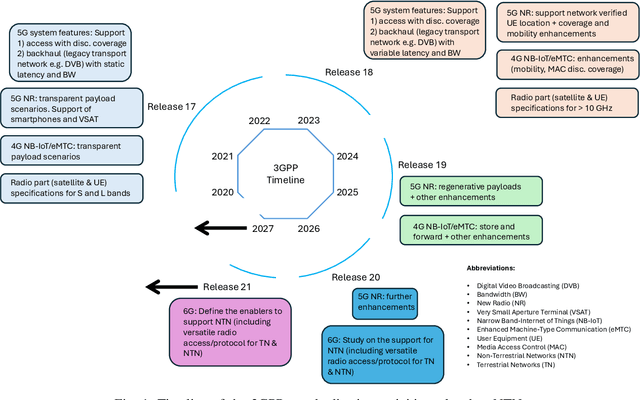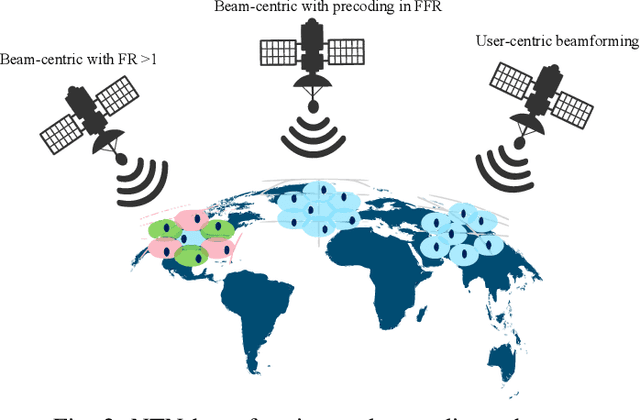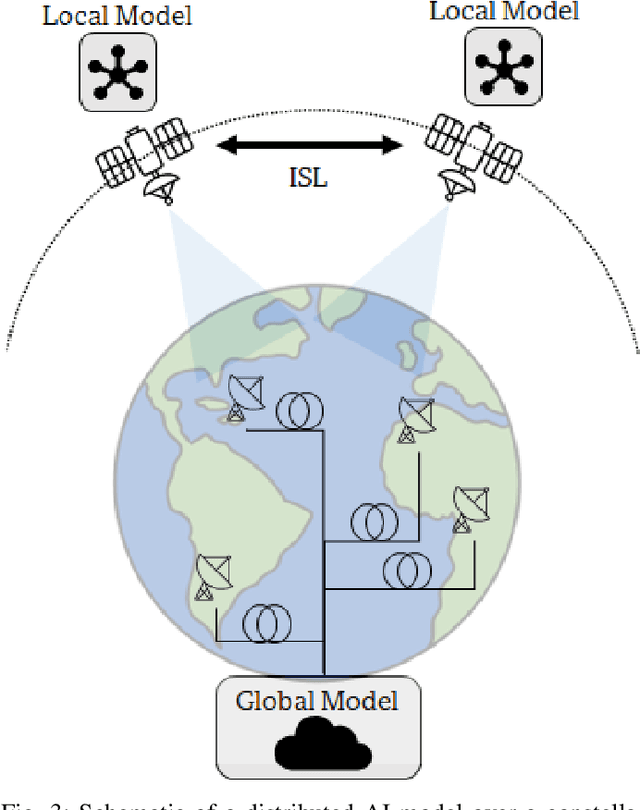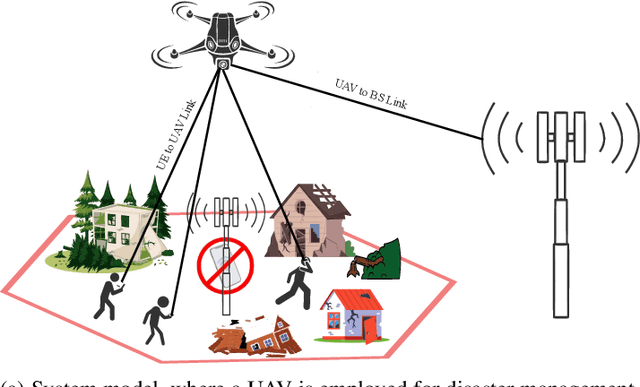Alessandro Guidotti
An SCMA Receiver for 6G NTN based on Multi-Task Learning
Jun 05, 2025Abstract:Future 6G networks are envisioned to enhance the user experience in a multitude of different ways. The unification of existing terrestrial networks with non-terrestrial network (NTN) components will provide users with ubiquitous connectivity. Multi-access edge computing (MEC) will enable low-latency services, with computations performed closer to the end users, and distributed learning paradigms. Advanced multiple access schemes, such as sparse code multiple access (SCMA), can be employed to efficiently move data from edge nodes to spaceborne MEC servers. However, the non-orthogonal nature of SCMA results in interference, limiting the effectiveness of traditional SCMA receivers. Hence, NTN links should be protected with robust channel codes, significantly reducing the uplink throughput. Thus, we investigate the application of artificial intelligence (AI) to SCMA receivers for 6G NTNs. We train an AI model with multi-task learning to optimally separate and receive superimposed SCMA signals. Through link level simulations, we evaluate the block error rate (BLER) and the aggregated theoretical throughput achieved by the AI model as a function of the received energy per bit over noise power spectral density ratio (Eb/N0). We show that the proposed receiver achieves a target 10% BLER with 3.5dB lower Eb/N0 with respect to the benchmark algorithm. We conclude the assessment discussing the complexity-related challenges to the implementation of the AI model on board of a low earth orbit satellite.
Non-Terrestrial Networks for 6G: Integrated, Intelligent and Ubiquitous Connectivity
Jul 02, 2024



Abstract:Universal connectivity has been part of past and current generations of wireless systems, but as we approach 6G, the subject of social responsibility is being built as a core component. Given the advent of Non-Terrestrial Networks (NTN), reaching these goals will be much closer to realization than ever before. Owing to the benefits of NTN, the integration NTN and Terrestrial Networks (TN) is still infancy, where the past, the current and the future releases in the 3$^{\text{rd}}$ Generation Partnership Project (3GPP) provide guidelines to adopt a successfully co-existence/integration of TN and NTN. Therefore, in this article, we have illustrated through 3GPP guidelines, on how NTN and TN can effectively be integrated. Moreover, the role of beamforming and Artificial Intelligence (AI) algorithms is highlighted to achieve this integration. Finally the usefulness of integrating NTN and TN is validated through experimental analysis.
Federated Cell-Free MIMO in Non-Terrestrial Networks: Architectures and Performance
Jan 31, 2023



Abstract:While 5G networks are being rolled out, the definition of the potential 5G-Advanced features and the identification of disruptive technologies for 6G systems are being addressed by the scientific and academic communities to tackle the challenges that 2030 communication systems will face, such as terabit-capacity and always-on networks. In this framework, it is globally recognised that Non-Terrestrial Networks (NTN) will play a fundamental role in support to a fully connected world, in which physical, human, and digital domains will converge. In this framework, one of the main challenges that NTN have to address is the provision of the high throughput requested by the new ecosystem. In this paper, we focus on Cell-Free Multiple Input Multiple Output (CF-MIMO) algorithms for NTN. In particular: i) we discuss the architecture design supporting centralised and federated CF-MIMO in NTN, with the latter implementing distributed MIMO algorithms from multiple satellites in the same formation (swarm); ii) propose a novel location-based CF-MIMO algorithm, which does not require Channel State Information (CSI) at the transmitter; and iii) design novel normalisation approaches for federated CF-MIMO in NTN, to cope with the constraints on non-colocated radiating elements. The numerical results substantiate the good performance of the proposed algorithm, also in the presence of non-ideal information.
 Add to Chrome
Add to Chrome Add to Firefox
Add to Firefox Add to Edge
Add to Edge